Culinary Tour of Quito – Part 2
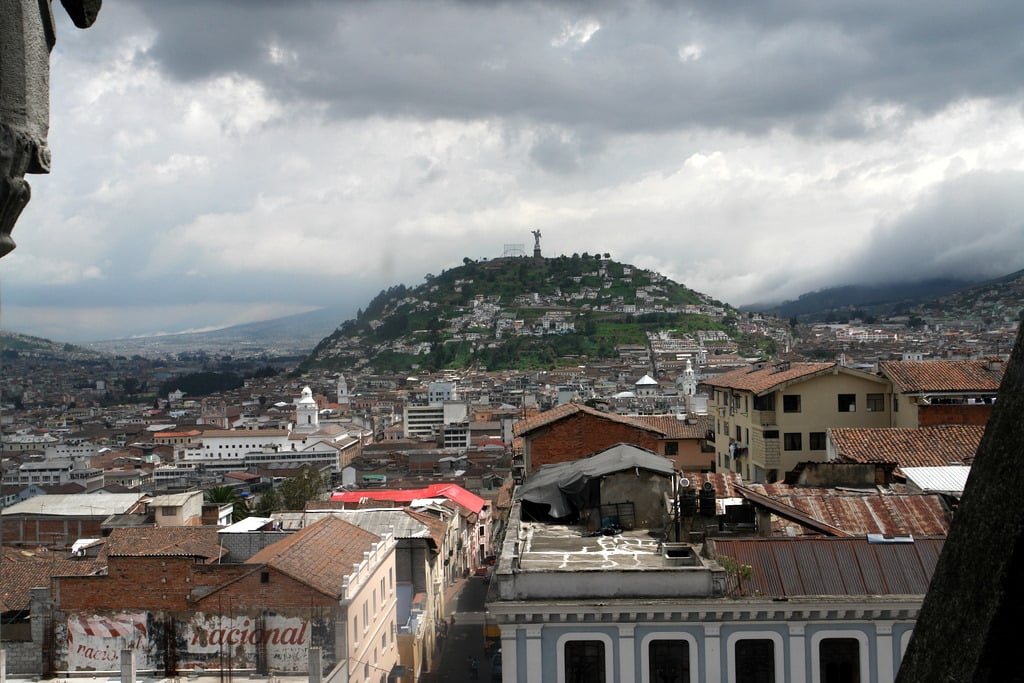
This is second part of our culinary tour of Quito. In the first part, Matt and Olga –those students in love – took us on a tour of some their favorite places in the city. Marc and I also had our own gastronomical adventure in this historic colonial city and will share our story. For those who don’t know, Marc is my 3 ½ yr old and this was his first time to visit Quito.
I grew up in Loja -southern highlands of Ecuador- and have vague childhood memories of traveling to Quito. One the visits that stands out the most was when I was 9 or 10 yrs old and it was just my mom and I. We stayed with one of her friends, not sure where but it seemed like it was part of the Old Town area. The most vivid part of that visit was a small tienda or store on one of the corners that had some of the best “helados de palo”, which are Ecuadorian popsicles: ice cream on a stick. The sticks are made from cana brava, a type of bamboo; while the ice cream part is placed in small tin molds with a stick in each one and then frozen. The most common helados de palo are milk ones, consisting of just milk boiled with cinnamon and sugar, then placed in the molds with a stick and frozen. Other popular variations are made with gelatin (watered down obviously) and coconut, one of my favorites is coconut with a thin layer of strawberry gelatin. This small tienda had helados de palo made with cream and they were amazing (and very addictive – I spend most of the money my mom gave me at that store).
I also vaguely remember another summer in Quito as a kid with some friends, but this time we spent the whole time in a suburb (Tumbaco) of the city in a big house with mean ladies who would force us to eat everything (including mellocos – slimy potatoes which I hated but now love). The house was surrounded by citrus fruit trees and one of the days we were there we went down to the street/highway to watch a bunch of cars racing in a rally. That’s about it for my childhood memories of Quito. As a teenager going to Quito was a different experience, it was typically with high school friends and involved partying or concerts (not many international singers came to our hometown of Loja so if we wanted to see them we had to go to Quito).
Now going to back to Quito as a parent with a 3 yr old was a new challenge. I’ll admit I was a little nervous at first about traveling to Ecuador alone with him. However, the minute I arrived those fears were gone, people in this country are very child friendly. Even in situations where he was loud or annoying, and I was expecting people to give me evil looks, instead people would tell me: “Oh, don’t worry, he’s just being a kid.”
One of the things to keep in mind about Quito is the effect that the altitude (2850 mt or 8464 ft) will have on you, basically you will walk a few blocks and feel out of breath, at least for the first days. For Marc, who is extremely lazy when it comes to walking – his favorite comment when we go hiking is: “I like hiking, but I hate walking”, it was a little bit challenging to adjust to the altitude. Luckily for him though is that in Quito –and everywhere in Ecuador – there is an abundance of cheap taxis; he quickly discovered that to avoid walking you could just get a taxi. Of course there a lot of areas that are great for walking in Quito, but it is a large city so taxi’s are convenient to get from one place to another.
The weather in Quito is relatively mild, usually in the 60’s (F) during the day, and cooler –low 50’s- at night. The main problem with the weather is that it can go from sunny to aguacero (major downpour) in minutes, so it’s a good idea to dress in layers. If you plan on going to the Teleferico – a cable car that takes you to the top of one of the volcanoes – take a warm jacket as it is very cold up there.
Breakfast
We started our day by having breakfast with our good friend Mafi, who hosted us while we were in Quito. She prepared some delicious torrejas de choclos or fresh corn fritters with freshly made orange juice.


Capilla del Hombre
After breakfast we took a taxi to the Bellavista neighborhood to visit La Capilla del Hombre or the Museum of Man. It is a tribute to both the oppression and pain of people in Latin America, but also to the hope keeps them fighting for their dreams. This museum was built by Oswaldo Guayasamin, Ecuador’s greatest artist. Guayasamin started the museum in the mid 90’s, but then passed away in 1999, and the museum was completed in 2002. One of my favorite parts is the mural that covers the inside of the dome, he was working on it when he passed away and it was left unfinished – it is beautiful, you would not know that it was an unfinished piece of art unless someone told you.






Mercado Santa Clara
Next we went to the Santa Clara fruit and vegetable market. Even though Matt and Olga were visiting the same market for lunch, Marc and I also wanted to check out. I wanted to get some fresh fruits and Marc wanted to get some flowers for Mafi. Flower exports are one of the main industries in Ecuador and a lot of them are grown in the areas around Quito. They are also very inexpensive; you can get a nice bouquet for $1. One the fruits that I miss the most are babacos, I’ve heard they’re called mountain papayas in English. Babacos are juicy and sweet inside, a fruit so perfect that doing anything other than eating it plain doesn’t do anything to improve it. The market also brought back a lot of old memories of things so typical in Ecuador: buying fresh already peeled beans; finding fresh herbs such as chamomile, lemon verbena, lemon grass; stands selling “cures” for “espanto” – a cure for people (mainly kids) that have been frightened by something or someone (sometimes this also involves witch craft or evil eye). You also can find all different types of meat and seafood in the mercado, as a kid I hated going through the meat section, seeing the dead animals was scary (at least there was a cure nearby in case I got seriously frightened) .
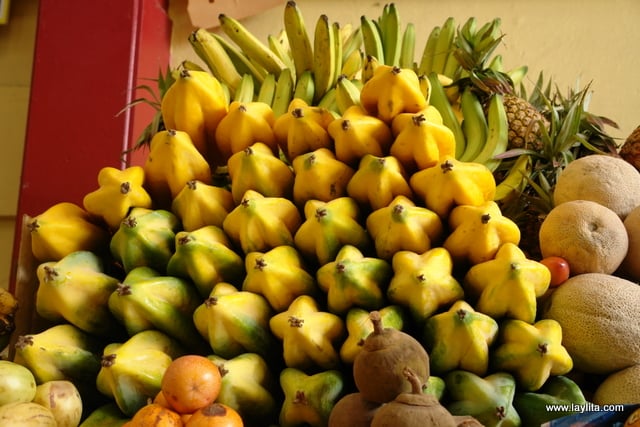

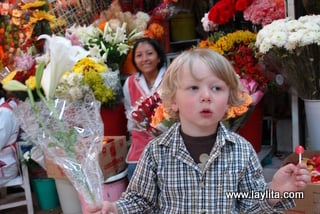
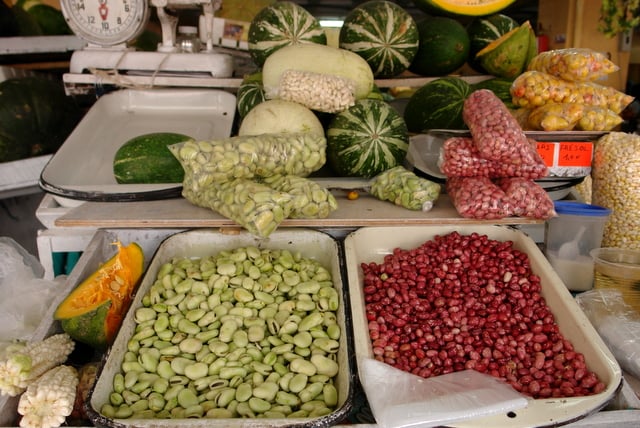
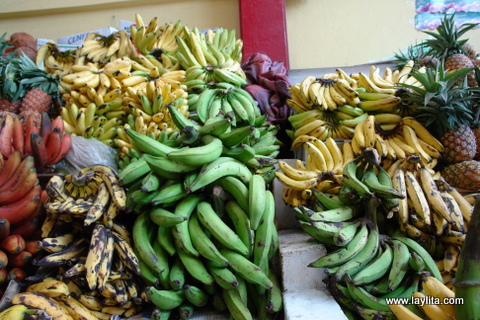
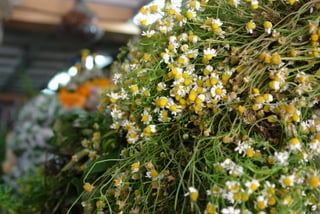
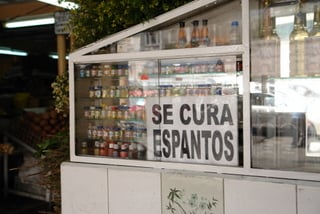
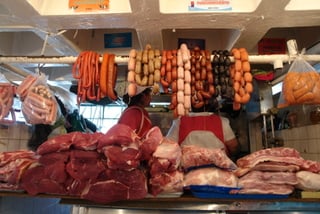
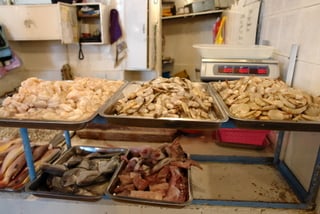
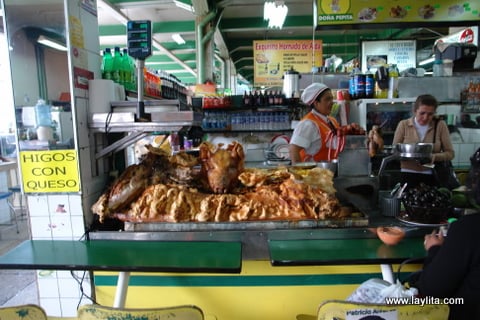
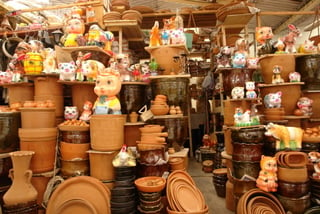
Lunch at Mama Clorinda’s
Even though we were getting hungry and very tempted by eating something at the market, we wanted to try a restaurant called Mama Clorinda’s in the modern or New Town area of Quito. This is a good casual restaurant to try a lot of typical Ecuadorian dishes, especially if you aren’t comfortable eating at market stalls but still want to try the local specialties. Of course the best way to try local foods is to get invited to eat at an Ecuadorian friend’s house.
We (or I) started with some chicharrones, what we call chicharrón or chicharrones in Ecuador are not the same as the ones in Mexico or Central America. In Mexico chicharrón is the fried pork rind, but in Ecuador what we call chicharrón is actual deep fried pork belly – yes, probably the fattiest dish in the world. Chicharrones are served with mote or hominy and the combination of a salty greasy crunchy chicharrón with bite of tender mote is delicious.
Most restaurants will have a side of hot sauce or aji on the table. My favorite aji is made with tomate de arbol or tree tomatoes, also called tamarillos in the US. This fruit is very popular in Ecuador and is also used in juices and desserts. Tree tomato hot sauce is typical of the Sierra or highlands of Ecuador. There are many different variations of this aji, but the one in Quito typically has chochos or lupini beans added to it. We were also served a side of chochos and tostado – Ecuadorian corn nuts – with our meal.
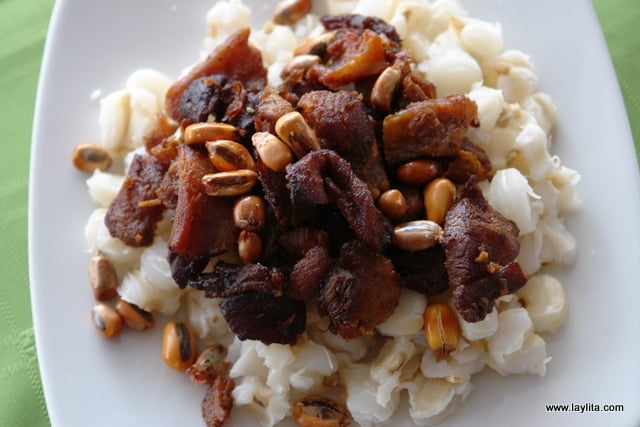
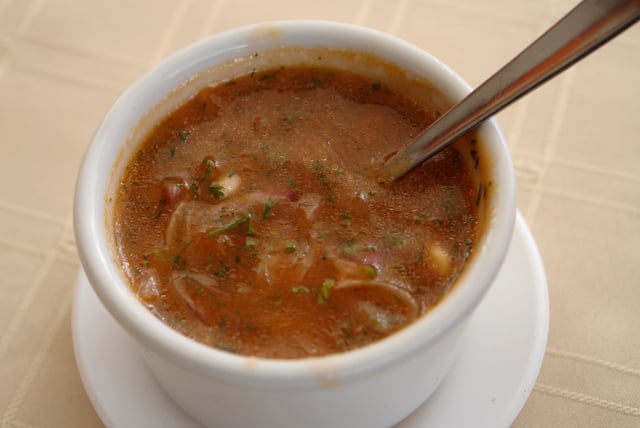
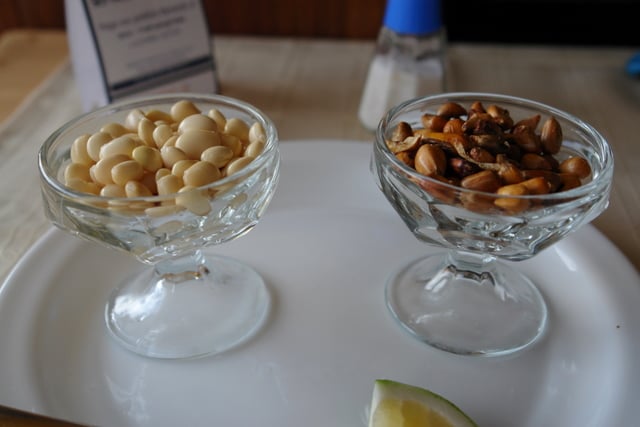
Marc had some locro de papas, a creamy cheesy potato soup served with avocado slices and a freshly made tree tomato juice. Most people who visit Ecuador tend to agree on at least one thing: the fresh fruit juices are the best. I also had to order a glass of chicha, a drink made from fermented corn, I admit that it isn’t my favorite drink and I prefer to cook with it than drink (it’s great in meat stew type dishes and is also great in marinades), but you can’t go to Ecuador and not have a glass of chicha.
For my main dish I had to order cuy or guinea pig, it is one of those dishes that would be impossible to cook in the US. I really wanted a whole roasted guinea pig (sorry to all the vegetarians), it is quite impressive, you get the head and everything on your plate. However, I knew I wouldn’t be able to eat a whole one, so I ordered a half instead. If you want to try cuy, but are afraid that the image of a whole rat like looking animal on your plate will be too much to handle then request a half, it looks like more of a normal piece of meat. So, what does guinea pig tastes like? Well, it is very tender and I hate to say that it tastes like chicken, it probably more like rabbit but without the game taste. It is really good!
For dessert we had quimbolitos, a sweet cake steamed in an achira leaf. If you don’t know about achira leaves you might think they are banana leaves, but they are very different and are much more subtle in the flavor they leave on the food. In Ecuador even the tamales are wrapped in achira leaves. The achira plant is a type of arrowroot and is also used to make a starch called chuno that is used to thicken jams or sauces. We also had dulce de tomate de arbol or tree tomato preserves for dessert.
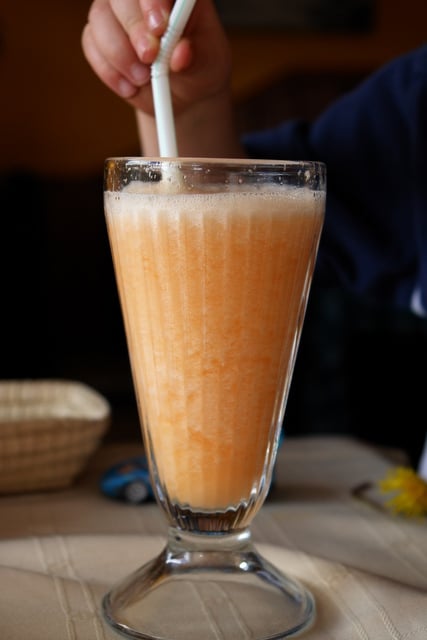
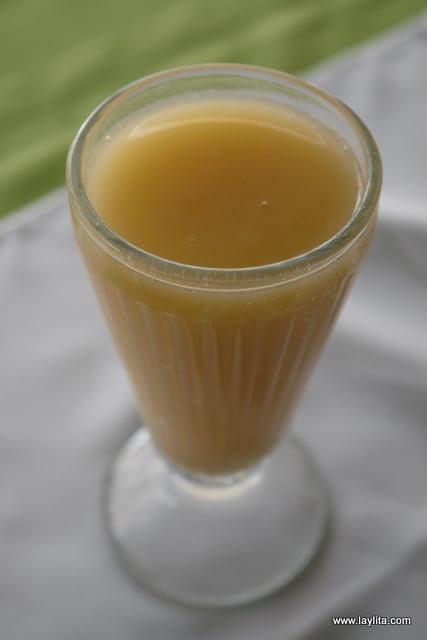
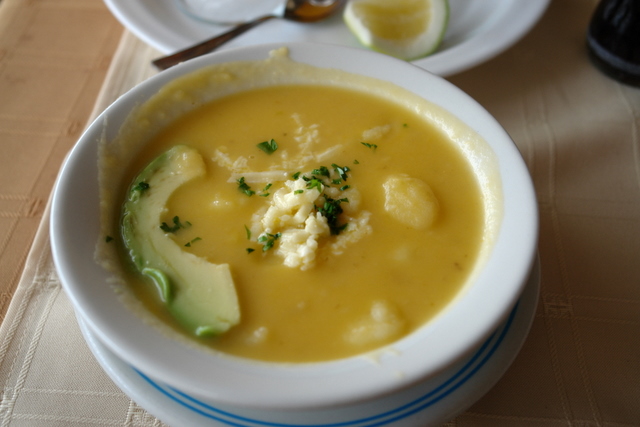
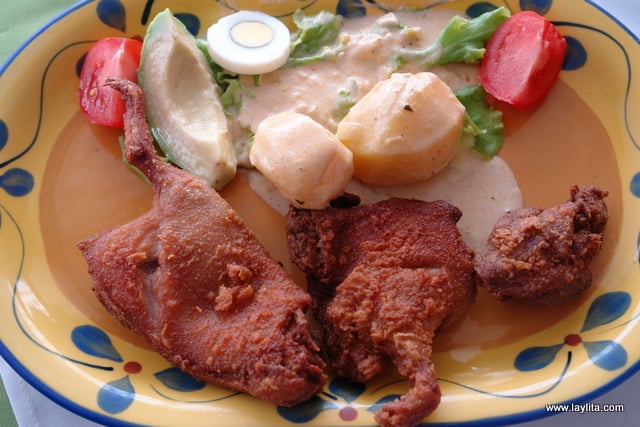
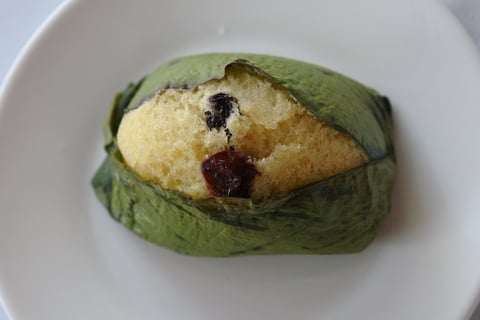
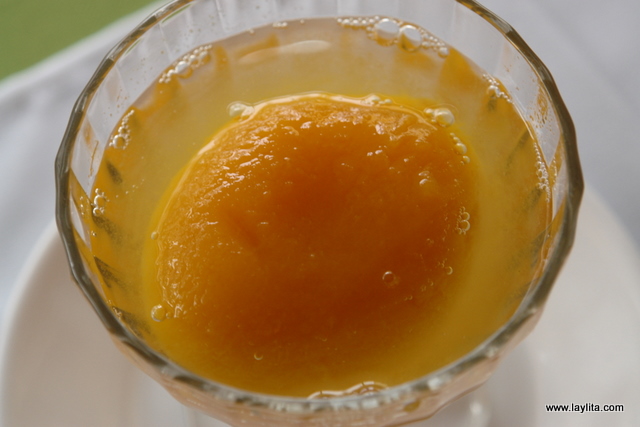
An interesting anecdote about this restaurant is that while I was looking at their menu I was surprised to find a few photos from this blog on their menu. Of course I asked them about it, but they said they simply ordered the menu from a print shop that added the photos. I also had the same experience at a small hole in the wall restaurant in the coastal area of Ecuador.
Mercado Artesanal
Following that huge meal we walked from the restaurant to the Mercado Artesanal, a small market that sells local crafts, art, clothes and souvenirs. It was a good 10 blocks away from the restaurant and despite Marc’s many requests for a taxi we walked the whole distance – I kept telling him the taxis were full. I got some replicas of Guayasamin paintings there as well as some pieces of sculpted wood art. Marc got some small wood toys for his brother. We found a small stall that also had helados de paila, handmade fruit sorbets, and couldn’t resist having some. Marc had the mora or blackberry and I had a naranjilla, a local citrusy flavored fruit.
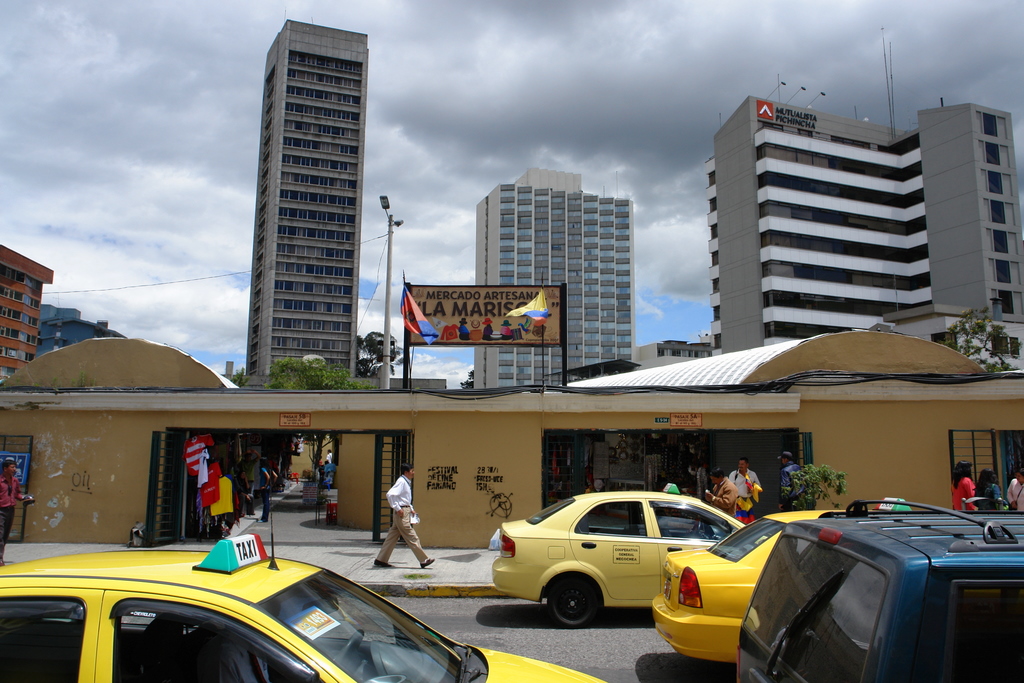
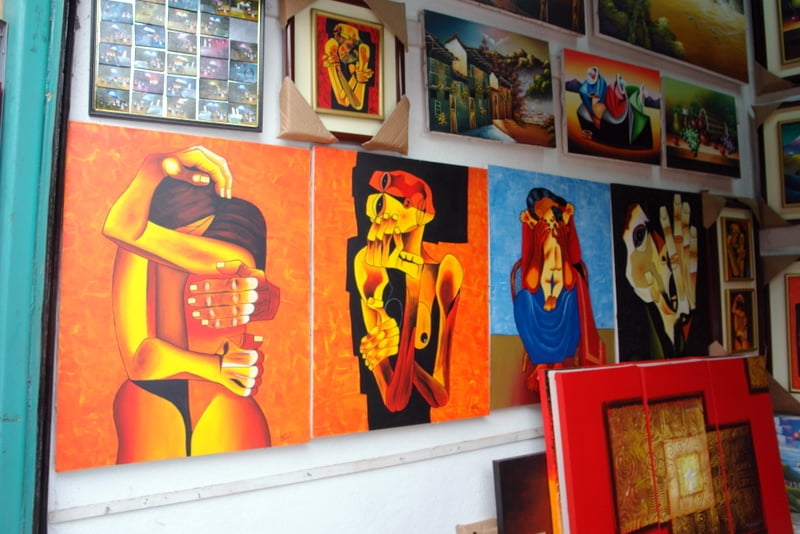
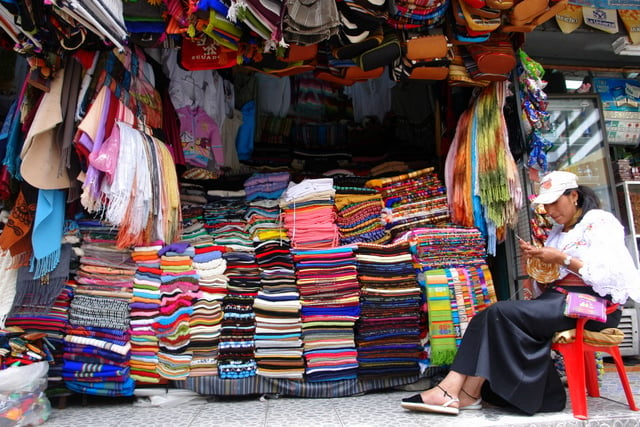
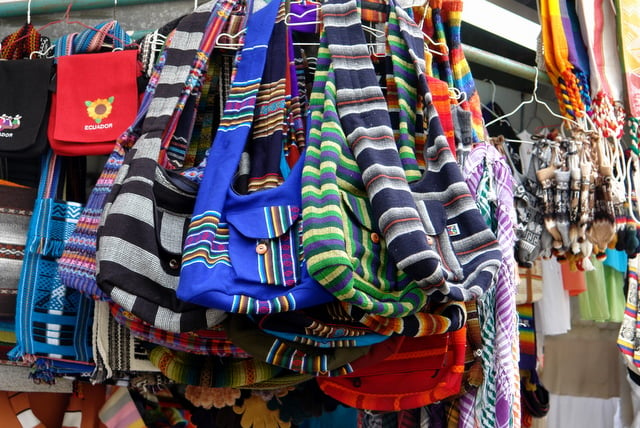
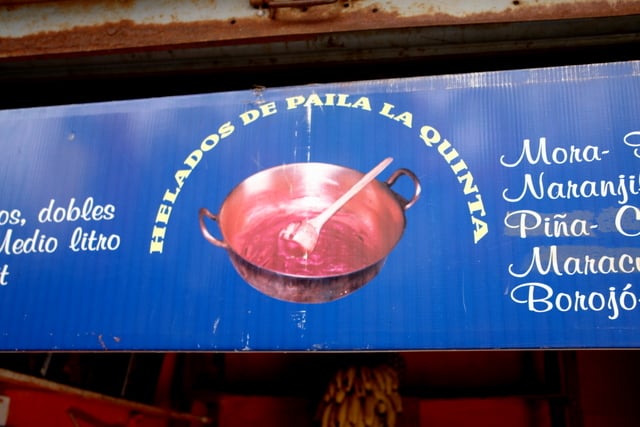
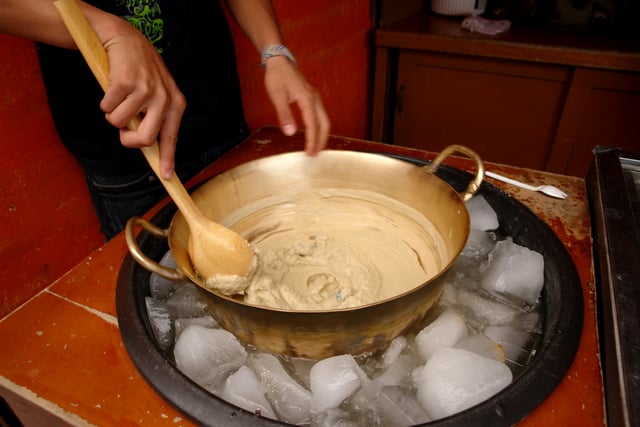
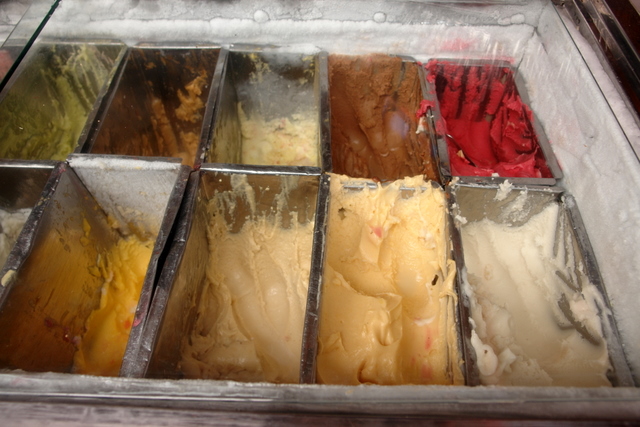
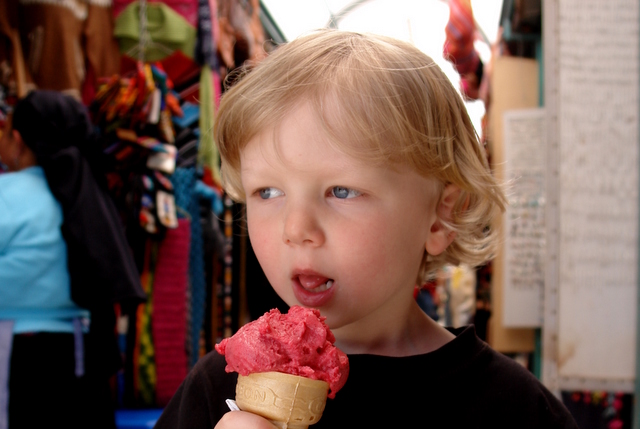
We had a lot of stuff to carry so we went back to Mafi’s to drop off our purchases – and to try to convince Marc (unsuccessfully) to have a small nap.
Centro Historico and Panecillo
After a short rest we took a taxi to the Centro Historico or Colonial Center where we visited the churches and plazas. One of the most impressive churches is La Compania, it was built in the 1600s and is absolutely beautiful inside. The no photography policy is very strictly enforced so only exterior photos are shown here. We also visited La Basilica, which has great views of the city from its towers and does allow indoor photos. You can either walk to La Basilica from the Centro Historico or take a short taxi ride.
The sky started getting very cloudy and dark – never a good sign in Quito-, but we still had a few places to visit, including El Panecillo. El Panecillo, literally a small bread roll, is the name of a hill topped with a large Virgin statue, that is visible from many parts of the city. The views from this hill are very impressive, but it is a pain to get there, mainly because the safest way to get there is by taxi and instead of normal $2-$4 fare you get charged $15. Part of this is because there aren’t a lot of taxis there so the drivers aren’t guaranteed that they will have someone to drive back, I negotiated to have the driver wait for us and then take us to the Teleferico so it wasn’t too bad – remember that all prices in Ecuador are negotiable and if you look like a foreigner you will always be quoted a higher price.
The Virgin statue on the Panecillo is very large and there is even a restaurant inside the statue. Mafi mentioned that the restaurant has good burgers, but since the weather was starting to turn we wanted to continue our adventure and have a snack when we got to the next place on our list.
You might have noticed that Marc has a lollipop in his mouth most of the time we were sightseeing. Yes, I bribed him. Lollipops are called colombinas or chupetes, in case you need to do the same.
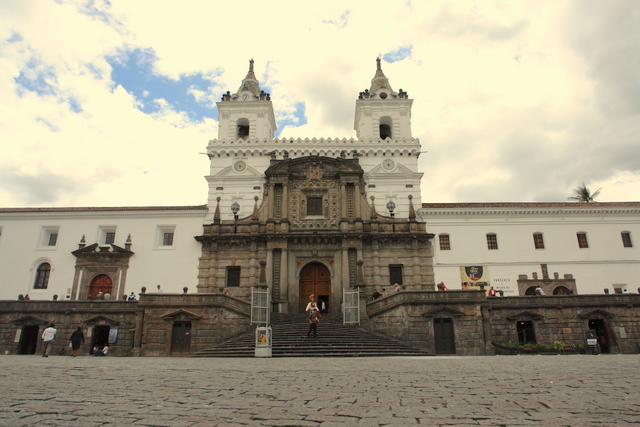
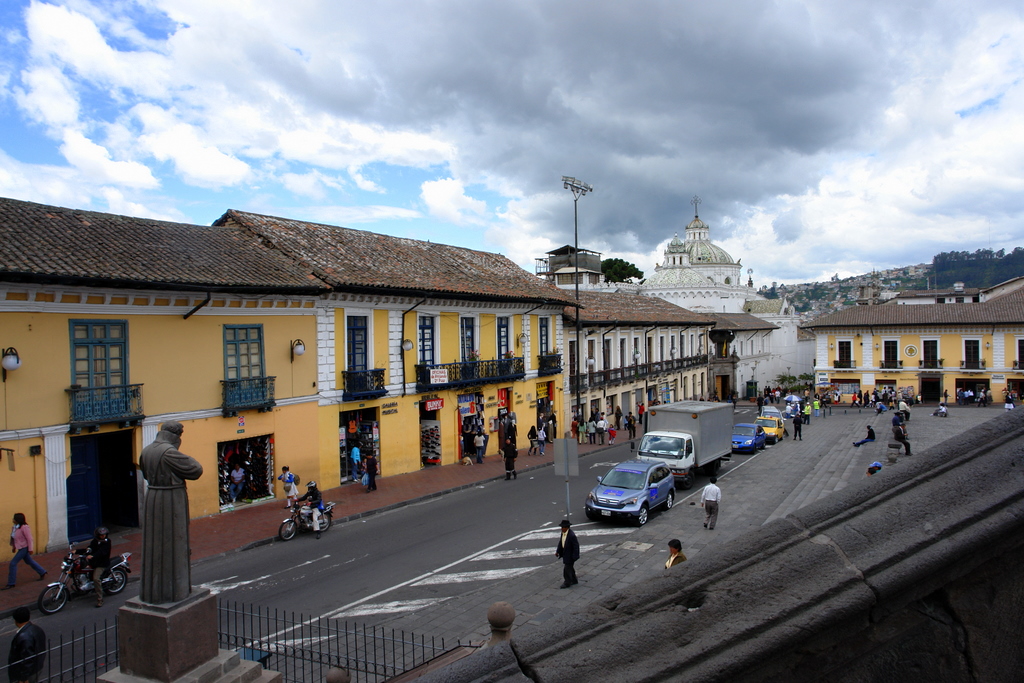
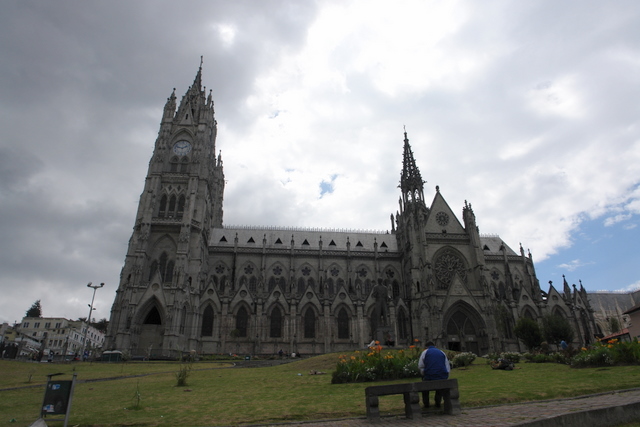
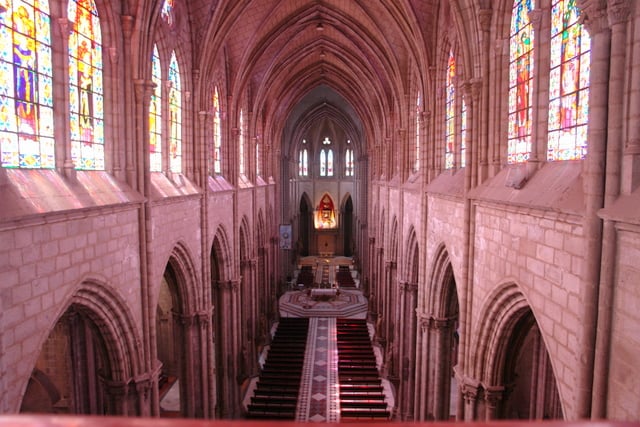
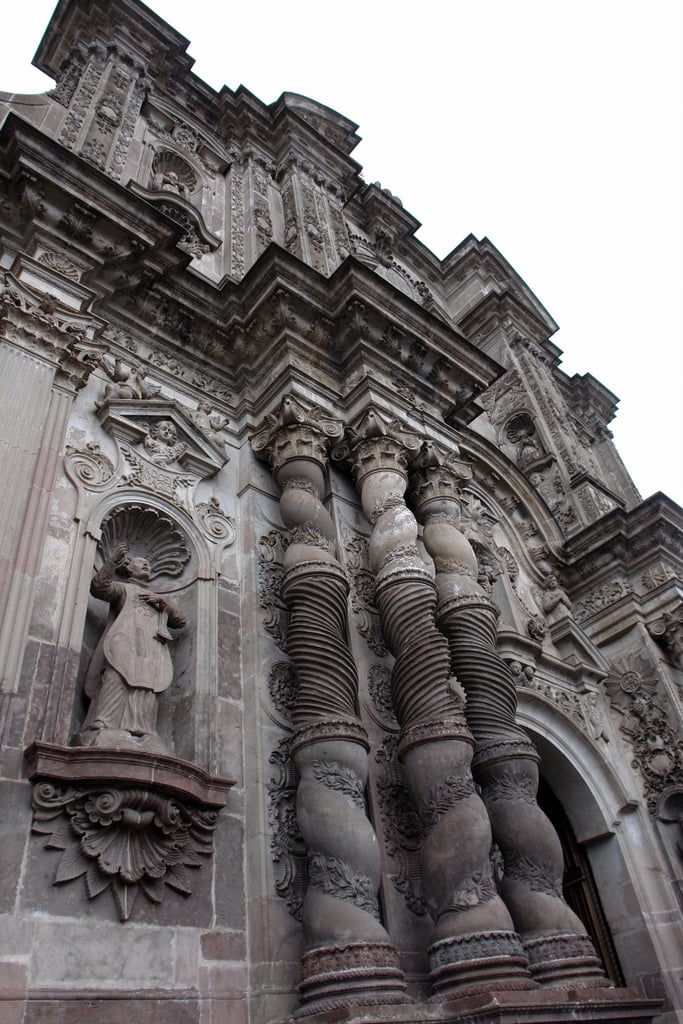
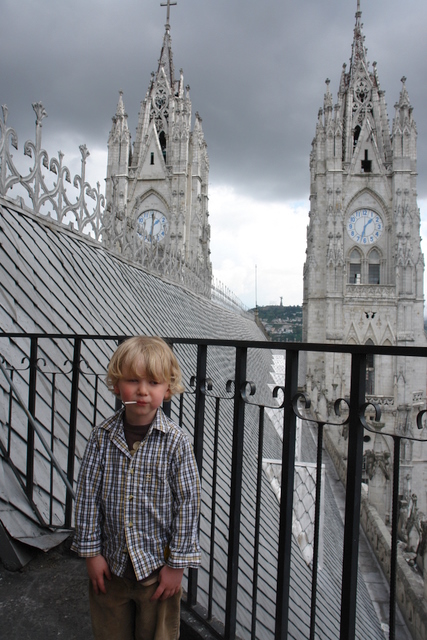
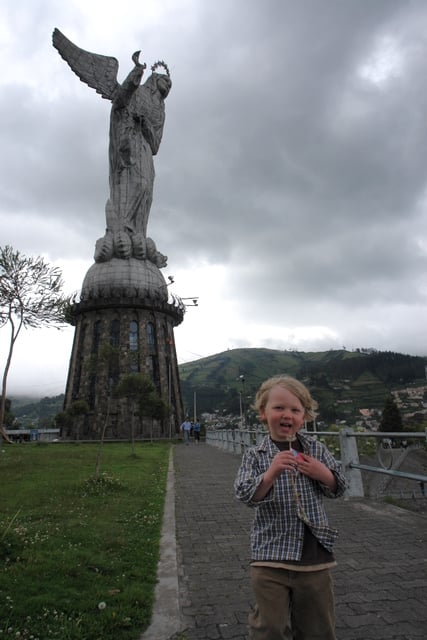
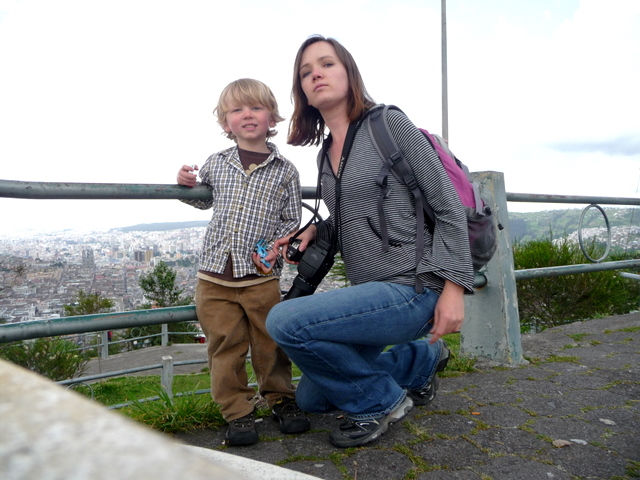
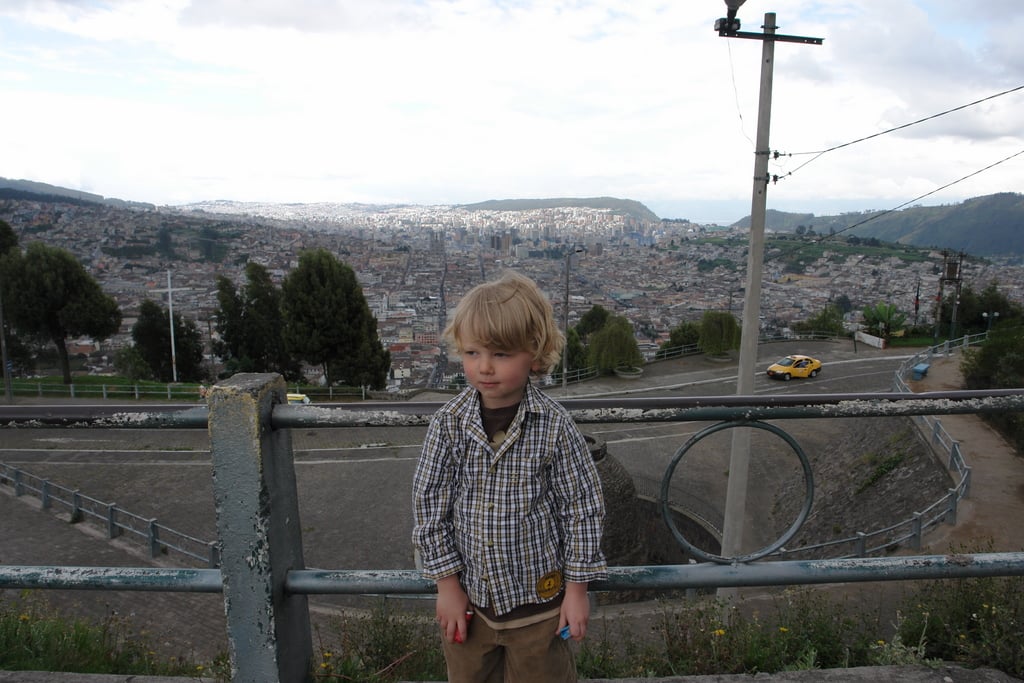
Snacks at the top of a volcano
We arrived at the base of the Teleferico or Cable Car, it was on the opposite side of the Panecillo, and were happy to find that the weather was a lot better there – blue skies. Of course as soon as we started our ride up to the top of the volcano, it started getting very cloudy. By the time we were at the top it was completely foggy and we couldn’t see anything. Since the view was gone we went to the small café and had an afternoon snack. We had a few empanadas, some salchipapas –Ecuadorian style French fries with sausages covered in mayo and ketchup -, another tree tomato juice for Marc and another Coca Cola for me. The empanadas were not the best and the fries were just ok, the juice as usual was great. While I was disappointed that we missed the view, at least we got to eat Ecuadorian style junk food at 4,100 meters of altitude. Yay!
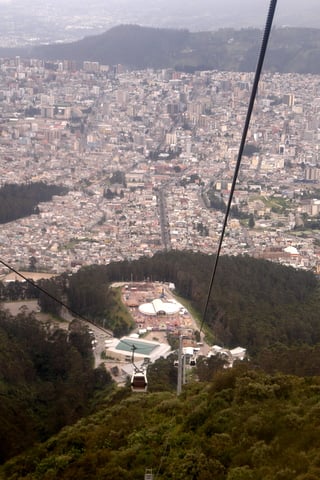
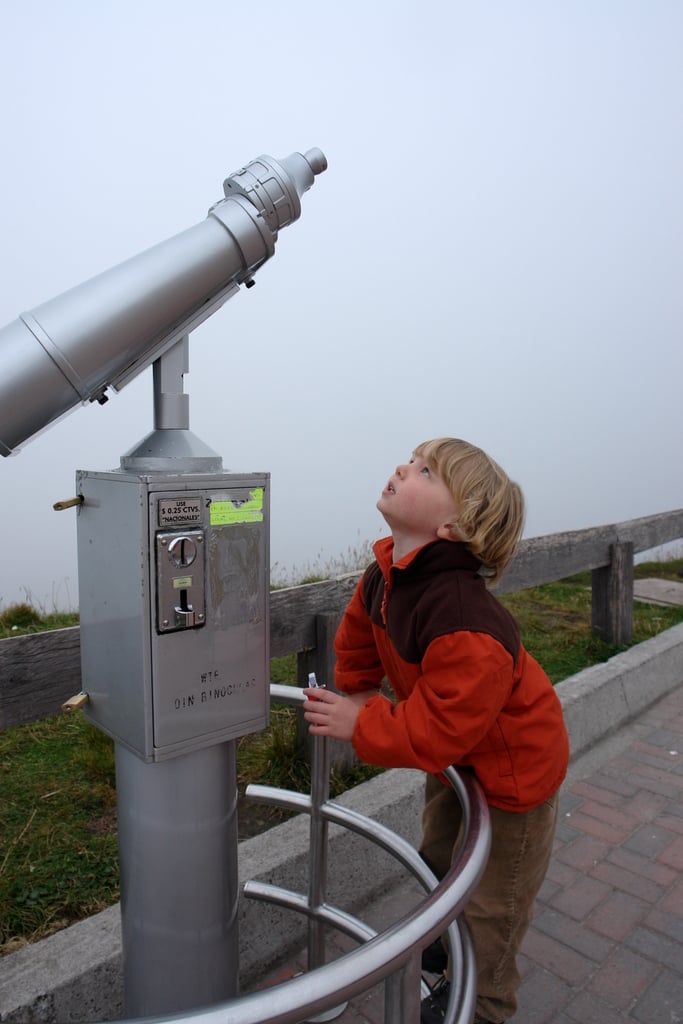

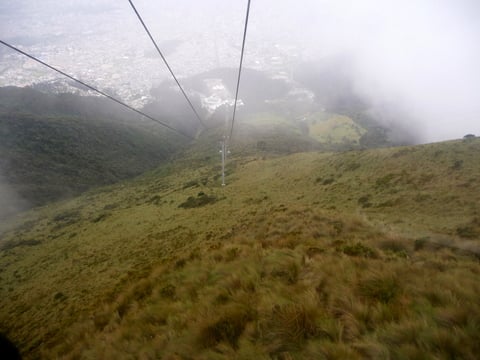
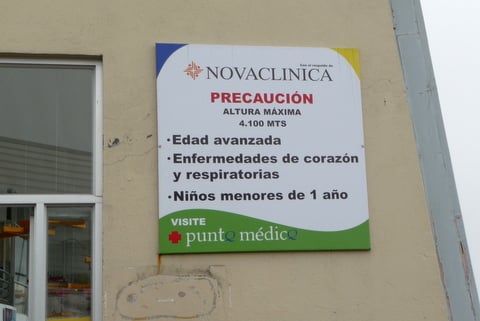
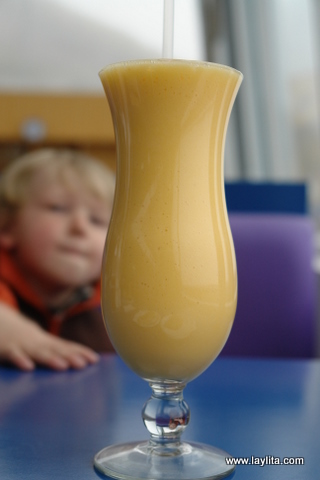

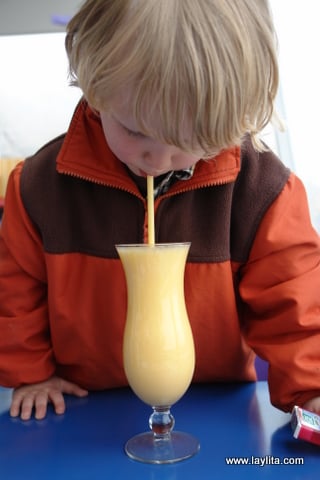
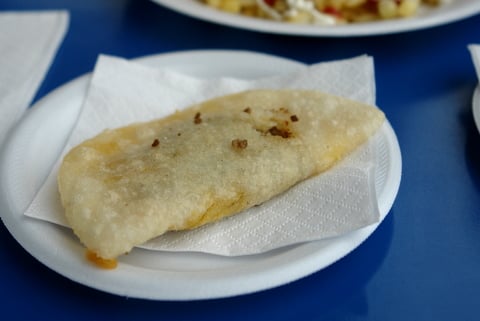
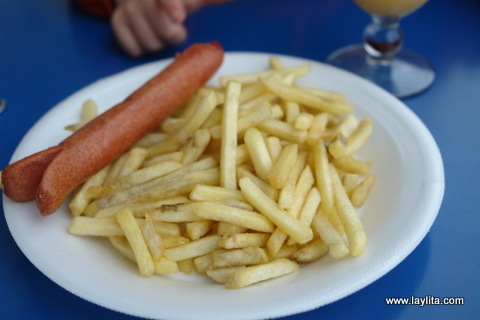
Dinner at Rincon La Ronda
After having a another short break at Mafi’s – breaks are essential with 3 yr olds – we went to have dinner at Rincon La Ronda, another typical Ecuadorian restaurant , located very close to the one where we had lunch. This place is little bit more formal and has a colonial style décor. Marc tried a naranjilla juice this time and I had a cerveza Pilsener.


I also tried the empanadas de morocho, the dough for these empanadas are made by soaking dry corn and grinding it. The empanadas at this place were a lot better than the ones we had in the afternoon. Marc ate a soup, caldo de huevo or egg broth, which reminded me a lot of soup called cariucho. The soup consisted of a milky broth, diced potatoes, poached eggs, cheese and crouton type pieces of bread
I wanted to try the lengua en salsa de mani or tongue in a peanut sauce. One the reasons why I wanted to try this dish is because I really don’t like tongue, I find the texture gross. However as a person who used to dislike a lot of different dishes I believe that is possible to like any dish if you find the preparation that makes it work for you. The sauce was really good, but I could only eat a few bites. I still need to find a tongue dish that I like. Suggestions are welcome.
For dessert we had a dulce de babaco. As I mentioned before, I love babacos, a yummy juicy fruit that is best eaten plain or just drizzled with some honey. Babacos are also used to make dulce or preserves, which are very common desserts in Ecuador. I have nothing against dulce de babaco, it’s very good, but it doesn’t compare to the fruit eaten just plain.
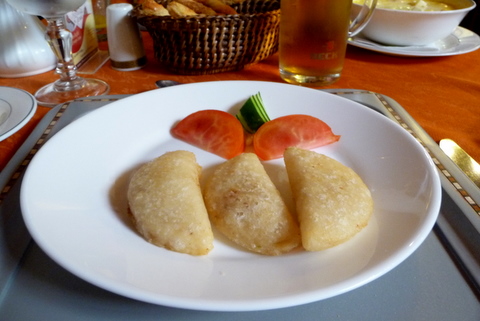
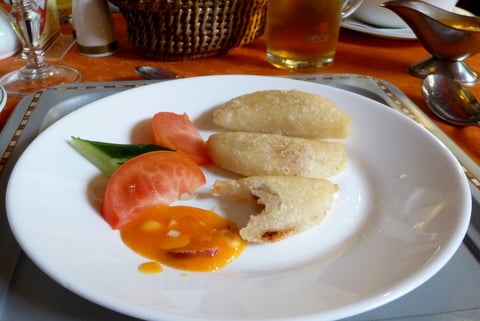
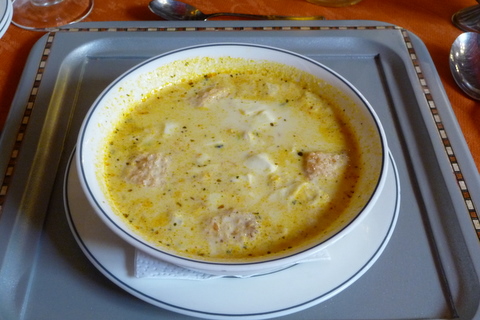
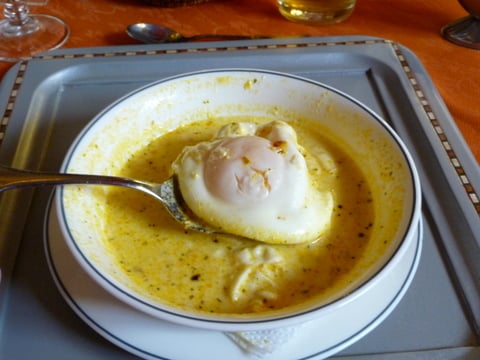
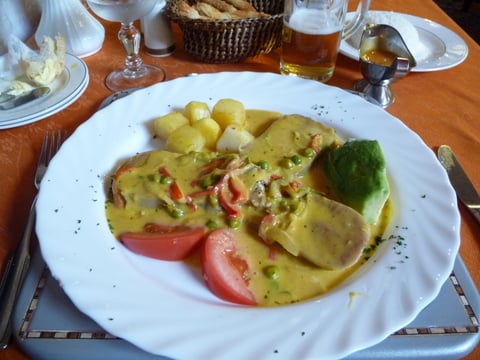
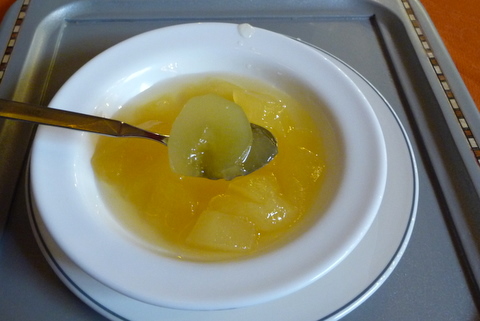
While there are a lot of great places to go after dinner it was obvious that Marc was very tired after a long day of eating and sightseeing, so we ended our adventure in Quito and he fell asleep on the taxi ride home. If he had a little bit more a energy left we might have gone back to Colonial Center, the plazas and churches are lit up at night. It is very pretty and you can enjoy it by taking a horse carriage ride around the area. There is also an area near the Colonial Center called La Ronda (not to be confused with the restaurant), it is a street that has been restored to look like the old colonial days. Traffic is closed off and there are several restaurants that offer hot warm drinks, typical food and live music. It’s a great place to go after dinner or even for dinner; it’s good for kids also – as long as they are still awake.

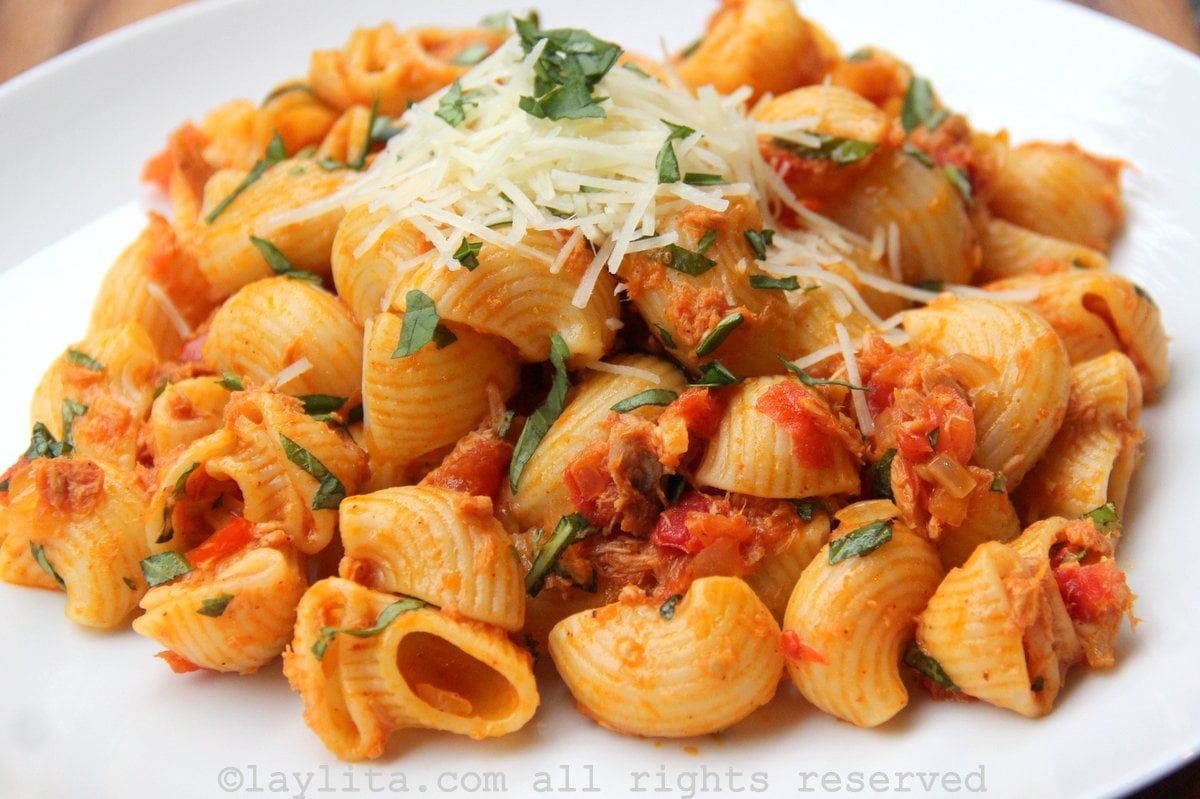
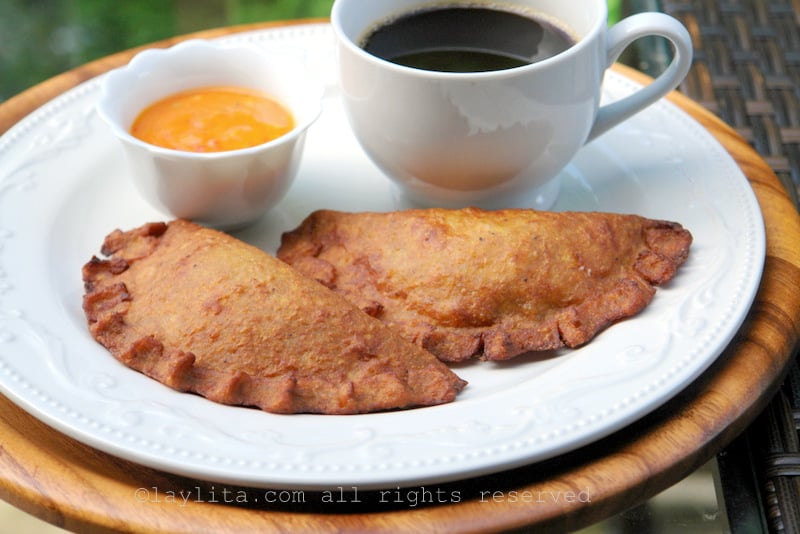
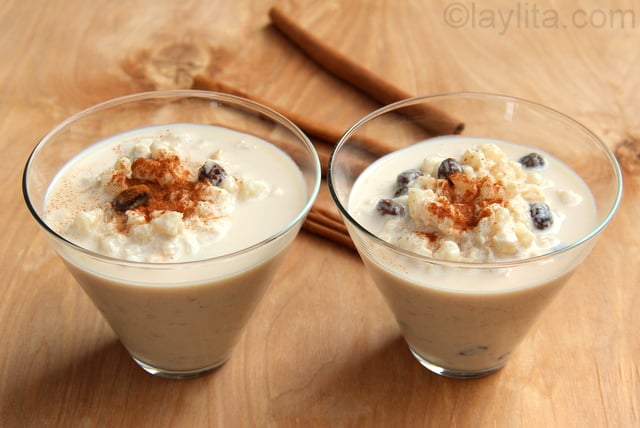
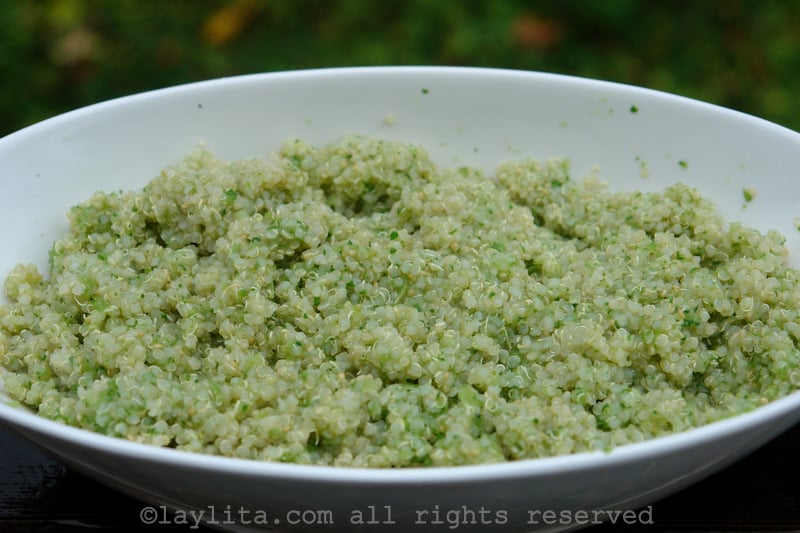
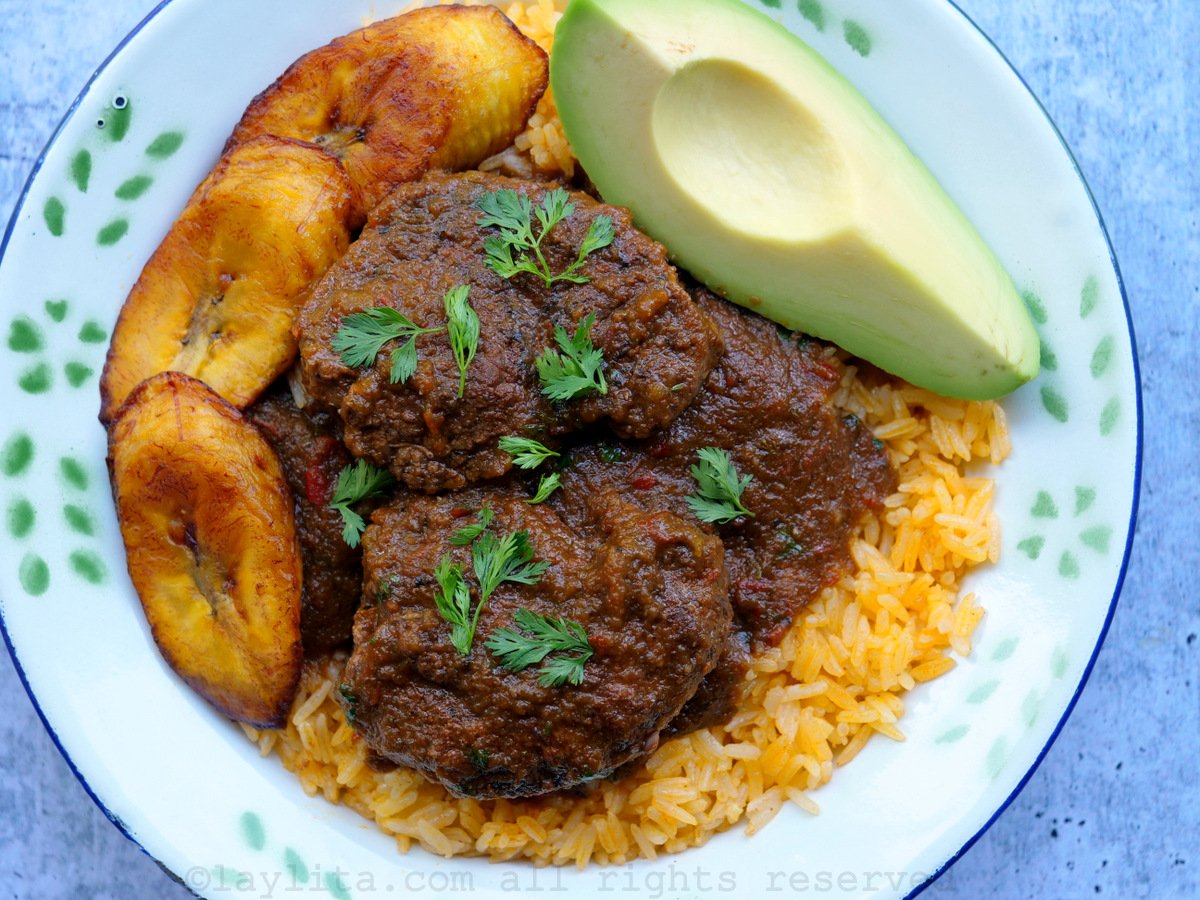
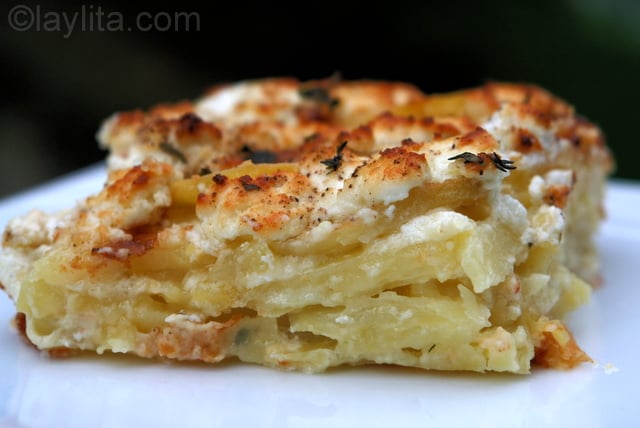
This brings back some great memories. I was assigned to Quito in the early ’80s by a US government agency. Did something interesting with the Ecuadorean air force. Since I was low profile I got a room in the Hotel Gran Casino at the foot of El Panecillo. Walked up there several times. This was a great neighborhood for street food. Plus lots of little family run restaurants. I hit the crab carts in the market a couple times a week. A great snack while walking through the market were a couple fillets of fried sea bass (maybe) wrapped in paper. How to tell the best food stalls/carts? Look for a woman who was as heavy set with about 5 kids helping her. If she could feed all them cooking for a crowd was no problem. You’d see vendors with a roast pig laid out on planks. More of that ubiquious pink paper that seemed to wrap all food. A hunk of pork, a couple of papas and a few spoons of aji. My hotel served a great fixed price lunch of soup, meat, veggies, rice, bread and juice for 35 cents US. Not a traditional Ecuadorean dessert but they made incredible chocolate covered rum balls. The place was well worth the $1.10 a night. It had a great sauna. At night the bus station at the end of the block was taken over by a woman with a push cart. She and her kids had the cart, lots of buckets, and cooked over those old brass kerosene stoves. Everything from eggs to noodles to great chicken. Couple of soups. On a given night she served about 10 dishes. The clientle was interesting. Indians from out of town who hit the local bars and right next to it was a house of ill repute and the working girls ate there. One of the most interesting places to eat was a local all night movie theater. Out of town Indians normally came in to the city very early and caught the last bus out. If they had to spend the night instead of splurging on a hotel they stayed at the theater. Up in the balcony all the seats were removed. They set up their kerosene stoves and on more than one occasion I was invited. Across from the old prison was a huge indoor market. Incredible produce. Big bags of moras… I could eat those all day. Giant cabbages…2-3 ft. across. Every kind of fruit. I’d buy the bags of dried bananas. On just about every corner someone was selling some kind of dessert. Lots of good Chinese food. Only one thing I didn’t like. Guatita. One night I was with some friends and we walked by a women with a cart yelling Guatita. Since we had never had it we stopped. This was outside a bar and the patrons were eating plate after plate. They made it sound like the national dish. So we ordered. Big plate for 15 cents. Curried tripe over rice and potatoes. Like eating a spice wet suit. The locals were all smiling as we ate. We had to finish or we would have insulted the national honor. In the day I worked in an office in the new city across from the North Korean embassy. Since we had 3 hour lunches I’d sometimes go back to the old city. Other times I’d stroll down Amazonas. Lots of restaurants catering to the upscale crowds. My favorite was an Italian place that did amazing thin crust pizzas. Over the decades I got sent to a lot of countries in Latin America. Ecuador has an amazing variety of dishes. I’ve never found an Ecuadorian restaurant in any place I’ve lived in the US.
Hi Bill – Thanks for sharing your story! I think you should give guatita a second chance!
Good evening Laylita,
I can across your website when googling grilled salmon and I have to say how much I’m enjoying your blog with all your recipes and how excited I am to share them with my 18 month old. The two of us have traveled from the US to Italy, the Middle East, and now South America in our kitchen.
It was touching and thoughtful of you and your family to share your travels to Quito and I was wondering; do you have the recipe to that wonderful looking egg soup you captured above?
Many thanks,
Julie
P.S. You taught me how to cook rice and FINALY get it right…
Hola Laylita primeramente quiero felicitarte por tu pagina la comida mas rica solo con mirar las fotos se hace agua la boca pero yo no me quedo con las ganas yo miro que necesito lo compro y lo preparo yo soy asi .Te cuento que mi mama es de loja y cosina muy rico Laylita por favor receta de quimbolitos si no fuera mucha molestia
I just love your blogs Laylita! My husband and I took our 1 1/2 yr old are year ago to visit family in Quito. reading your Culinary Tour of Quito brings back merories of all the yummy foods Ecuador has to offer, how hard it was walking with a toddler and being seven months pregnant. blocks in Quito go on forever. im left graving Empanadas de Morrocho and missing the smells of the fruit market. i have gone blank what is the name of the fruit that looks like a passionfruit ? dont think they sell this here in Australia.
Hi Elizabeth – Thanks for your comment, the fruit’s name might be granadilla – it’s the shape of the passion fruit, but the skin is orange, you crack it open and can eat the fruit directly (or use it in juice).
Thanks for the great recipes and your blog does justice to Ecuador. It is a wonderful place with so much to offer. The food being just one of the many great cultural experiences.
Keep up the great blog and recipes, thanks for sharing your experiences and experience.
Can’t help finishing the other half. What an experience! Thank you again for sharing the fun.
I’m thoroughly enjoying your culinary tour of Quito. Like envigorating food, I will not finish reading this in one sitting to save some for next time. Thank you, thank you very much.
Another great culinary tour of Quito! I also loved Capillo del Hombre. A good friend of mine recently went back to Quito and bought me a Guayasamin print as my wedding gift, I was thrilled. Thanks also for the picture of the cuy, now I have something to show people when I explain what it looks like cooked!
Great website! My husband is Ecuadorian and his grandmother makes all of these delicious recipes and I have been wanting to try them myself…thanks for making it possible. I think I will start tonight with something easy like Carne Colorada and Tomatoe & Red Onion Salad…Yummy!
I’m feeling a bit nostalgic of Quito and very hungry! Ecuadorian food is so good. Thank you for all the wonderful recipes and pictures. I’m hoping to take my husband and 3 y/o son to Quito (we’re live in the US) soon and this helps a lot with the planning.